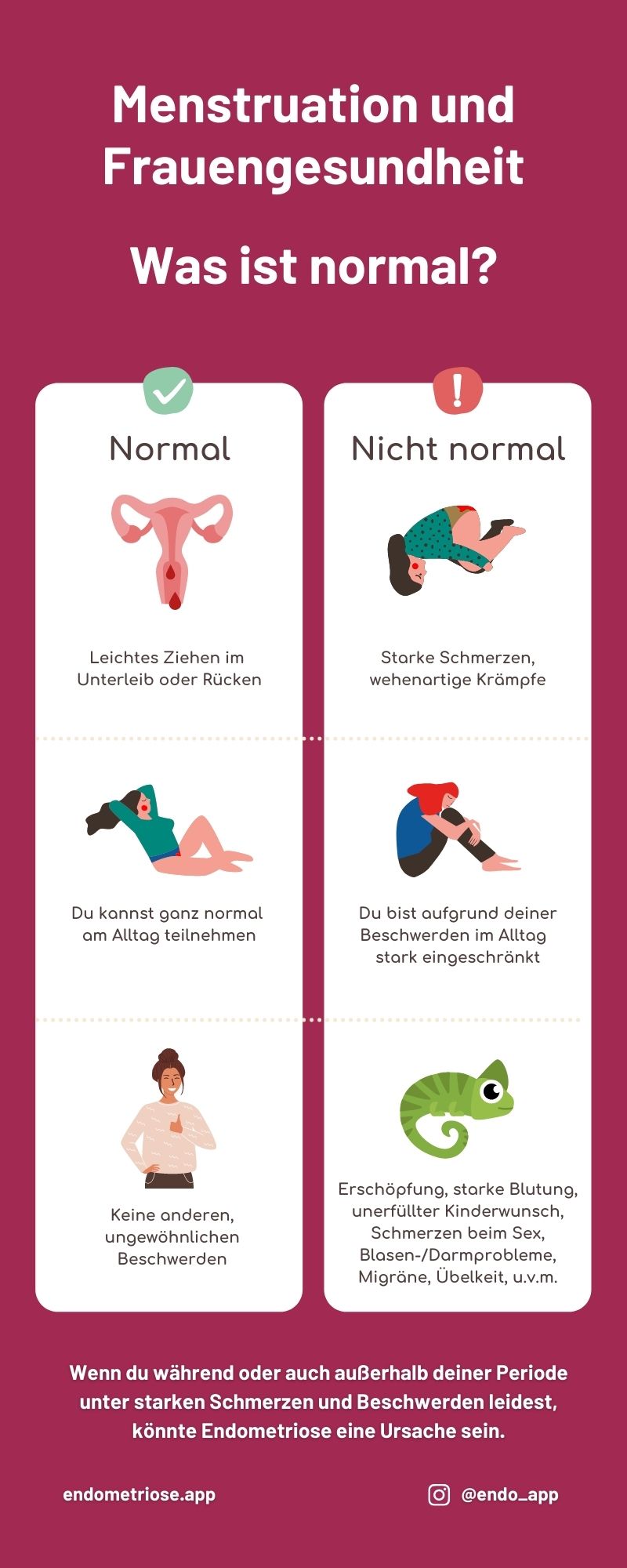Menstruation and Women’s Health – What is Normal?
When it comes to menstruation, many women often ponder: What can be considered normal?
Naturally, each body responds uniquely, and the duration of menstrual cycles can vary from woman to woman, just like the characteristics of the period and the bleeding itself.
In a healthy woman who is not using hormonal interventions, a menstrual cycle can typically range from 21 to 35 days. If your process consistently falls slightly shorter or longer, it can still be considered normal for your body.
You may experience a slight pulling or spasm in your abdomen or back during your period. However, this discomfort should not be severe enough to require regular painkillers.
You might notice light to moderate bleeding without any unusual symptoms, and you can manage your day with tampons, pads, or a menstrual cup.
Additionally, you may find that your breasts become tender or tense during your period.
Generally, your daily life during your period should not be significantly restricted. You may feel more tired on some days or have a decreased inclination for strenuous activities. However, under normal circumstances, you can attend school, university, or work, meet with friends, engage in sports, and carry on with your daily routine without significant limitations. Sometimes, you might not even think much about the fact that you are menstruating.
Have you wondered why some of your friends seem to handle their periods so well? Or perhaps you have been told that they do not feel that bad about their menstrual cycles?
You might think they are more resilient than you are.
It is possible that several women in your family, including your mother and sister, also experience heavy bleeding and pain during their periods, leading you to believe that this is just how it is for women.
Here is some reassuring news:
No, you are not imagining things!
No, you are not imagining the pain and discomfort you are feeling.
No, enduring severe, even labor-like pain and cramps that lead to nausea or fainting is not normal.
You do not have to take this pain!
If you are experiencing intense discomfort, pain, stomach or intestinal issues, food intolerances, difficulties with bowel movements (pain during urination and defecation, diarrhea or constipation, possibly even with blood), unfulfilled desires to have children, leg, shoulder, head pain, migraines, fatigue during and outside your menstruation, these could be potential signs of endometriosis or adenomyosis.
But what exactly is endometriosis?
You are likely familiar with the endometrium – the mucous membrane that lines your uterus and sheds during your period. Endometriosis lesions consist of a reasonably similar tissue that reacts similarly to the uterine lining: it grows and attempts to shed. As a result, you may observe blood in your urine or stool, for example.
These endometriosis lesions can emerge, grow, and bleed in almost any body part. That is why they trigger many symptoms you might not initially associate with endometriosis.
And what about adenomyosis?
Adenomyosis, on the other hand, occurs within the uterus itself. In this condition, tissue resembling the uterine lining grows directly into the uterine walls and may include glands and supportive connective tissue.
An enlarged uterus or thickened uterine walls can be indicators of adenomyosis.
Interestingly, adenomyosis can manifest with the same symptoms as endometriosis, making it initially challenging to distinguish between the two conditions.
You can find more detailed information in our article about adenomyosis.
What Should I Do Next?
Specialized endometriosis centers are available to help determine whether you may be affected by one of these conditions. The doctors at these centers specialize in both endometriosis and adenomyosis.
Many endometriosis centers offer consultations specifically for endometriosis. Scheduling an appointment there can be your first step in obtaining a consultation and examination.
If endometriosis is suspected, the doctor will discuss your case’s appropriate course of action.
In certain instances, hormone therapy may be recommended as an initial step to assess whether it alleviates your symptoms, reduces pain, and inhibits the growth of endometriosis lesions.
Alternatively, a laparoscopy may be deemed beneficial in some cases. Your attending physician will provide a thorough explanation of this minimally invasive procedure.
For More Information on Endometriosis and Chronic Pain
If you want to delve deeper into endometriosis and its symptoms, we recommend visiting our knowledge base. Go to the knowledge base section for comprehensive information,
Moreover, our medical expert Nadine and psychologist Teresa have crafted informative sheets for friends, family, and colleagues seeking to better understand endometriosis and chronic pain. You can access these sheets here: How to Discuss Endometriosis Effectively?
If you are curious about the measures and tools that have proven helpful to other individuals dealing with endometriosis, we have compiled a list of resources for you to look at. Perhaps you will find something your friend or relative may wish to explore.
How do you provide support to your affected loved one on difficult days?
Alternatively, what are the most effective ways for your friends and family to assist you if you are personally affected?
We welcome your recommendations and tips in the comments section below.
Within the Endo-App, you will discover many exercises to alleviate pain and an SOS plan for addressing emergencies.
- Interview with Silke Neumann on Home Remedies for Endometriosis - 18. November 2023
- Insights from an Interview with Fertility Specialist Silvia Hecher from LEVY: Navigating the Path to Parenthood - 18. November 2023
- What Influence Our Nervous System Can Have on Our Well-being – Interview with Annika Cost - 17. November 2023

